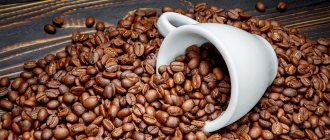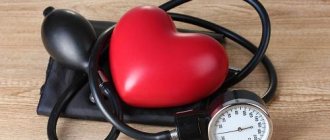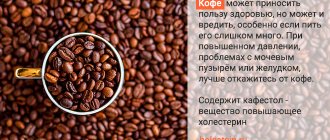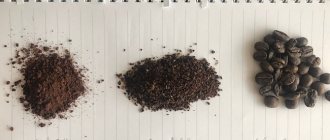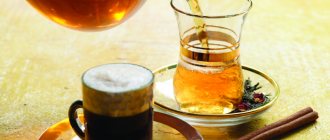Many people's mornings begin with a cup of aromatic coffee. Some people use it throughout the day. The main active ingredient is caffeine, which is a stimulant of physical and mental activity. Few people think about the side effects of coffee. Consuming the drink together with various medications can lead to serious consequences. Caffeine interacts with the components of drugs and reduces or enhances their effect on the body.
Coffee Research Results
One study found that drinking a cup of coffee with a hamburger reduced the body's absorption of iron by 39%. Drinking tea, a known inhibitor of iron absorption, with the same meal reduced iron absorption by as much as 64%.
Another study found that drinking a cup of instant coffee with bread reduced iron absorption by 60–90%. Moreover, the stronger the coffee or tea, the less iron is absorbed.
However, caffeine itself is not the primary substance that interferes with iron absorption.
One study found that caffeine itself actually binds to only 6% of dietary iron. Given that this is a relatively small amount, other factors must influence iron absorption. Additionally, regular coffee consumption may also affect iron accumulation levels.
A large study found that among older adults, each weekly cup of coffee was associated with 1% lower ferritin levels. This is a protein that indicates iron storage levels.
However, it's important to remember that the effects of coffee and caffeine on iron absorption seem to depend on when you drink your coffee. For example, drinking coffee an hour before meals did not affect iron absorption.
Coffee at temperature
During illness, in a feverish state, doctors recommend drinking a lot of liquid (herbal infusions, clean water, weak green tea). With a sharp increase in temperature, cardiac activity is significantly activated, the heart rate increases, and blood pressure may temporarily increase. The body, exhausted by the disease, can hardly bear such loads. Even one cup of coffee drunk during this period, interacting with antipyretic drugs taken, can lead to unpredictable consequences. Caffeine provokes a number of side effects, including tachycardia.
A tired, sick body requires sound, restful sleep. It’s not for nothing that they say that illness is easier to bear in sleep. By drinking an invigorating drink, we thereby forcibly invigorate the weakened body, creating an excessive load on the heart muscle. For this reason, it is better to refrain from drinking the aromatic drink.
Substances that affect iron absorption
Caffeine isn't the only substance known to interfere with iron absorption.
Polyphenols found in coffee and tea are considered major inhibitors of iron absorption.
These include chlorogenic acid, which is found mainly in coffee, cocoa and some herbs. In addition, tannins contained in black tea and coffee interfere with the absorption of iron. These compounds bind to iron during digestion, making it difficult to absorb.
Their effect on iron absorption in the body depends on the dose. This means that iron absorption decreases as the polyphenol content of the food or drink increases.
In one study, consuming beverages containing 20–50 mg of polyphenols per serving reduced the absorption of iron from bread flour by 50–70%. Meanwhile, drinks containing 100–400 mg of polyphenols per serving reduced iron absorption by 60–90%.
Another study found that consuming 5 mg of tannins inhibited iron absorption by 20%, while 25 mg of tannins reduced it by 67% and 100 mg by 88%.
How else does coffee affect the body?
As for the negative effects, with the exception of the detrimental effect on hemoglobin content in the blood, coffee can stimulate the following processes :
- prolonged increase in pressure;
- excessive stimulation of the nervous system when abused;
- leaching of calcium, magnesium and potassium from the body;
- development of varicose veins.
On the other hand, coffee, subject to proper and moderate consumption, can have the following positive effects on the body:
- improvement of the patient’s condition during attacks of hypertension;
- improved blood circulation;
- stimulation of the endocrine and digestive systems;
- improved performance due to stimulation of the central nervous system;
- replenishing the deficiency of a certain group of nutrients.
In addition, according to the results of clinical studies, consumption of natural black coffee without sugar can stop the development of malignant formations and increase hemoglobin levels.
Conclusion: to drink or not to drink coffee
Several studies show that coffee and caffeine are not associated with iron deficiency in healthy people without risk of iron deficiency.
Many people get enough iron from the food they eat. Regularly getting enough vitamin C and heme iron from meat, poultry and seafood can help overcome iron suppression from coffee and tea.
However, this may not be the case when polyphenols are consumed in very large quantities. For those at risk of iron deficiency, high consumption of coffee and tea may not be the best idea.
Who is at risk:
- The risk group includes women of childbearing age.
- Infants and young children.
- People with poor or restrictive diets, such as vegetarians.
- People with certain medical conditions, such as inflammatory bowel disease.
However, these groups do not have to give up coffee and caffeine completely.
Contraindications
Contraindications include individual intolerance, which does not occur very often, as well as previous operations, heart attacks, strokes and diseases of the cardiovascular system, among which, first of all, it is necessary to note atherosclerosis, tachycardia and angina pectoris .
Coffee is also not recommended for children, teenagers, overly irritable and emotional people. In addition, coffee consumption should be avoided during particularly hot times of the day and year.
Other contraindications include diseases of the liver, kidneys, digestive system and diabetes.
Recommendations for drinking coffee and caffeinated drinks
- Drink coffee or tea between meals.
- Wait at least an hour after eating before drinking coffee or tea.
- Increase your heme iron intake through meat, poultry, or seafood.
- Increase your vitamin C intake with meals.
- Eat foods fortified with iron.
- Eat foods high in calcium and fiber, such as whole grains, separately from foods rich in iron.
This will help limit the effect of coffee and caffeinated drinks on iron absorption.
How are the tablets absorbed?
For the body to feel the therapeutic effect of any drug, it must penetrate the blood. And for this, the active substance must be absorbed through the walls of the stomach or intestines. This process is significantly affected by the acidic environment, which differs in different parts of the digestive tract. For example, the acidity in the stomach is 1-3 pH, in the duodenum this figure already reaches 5-6, and in the large intestine - 8. For this reason, acid-based drugs are created in such a way that they are absorbed in the stomach, and alkaline ones in are largely intended for absorption in the small and large intestines.
Another test that a medicine has to go through in our bodies is the effect of enzymes. Many drugs lose their potency when in contact with food enzymes. In particular, we are talking about protein and polypeptide substances such as insulin and vasopressin. Some hormonal drugs (for example, those containing testosterone and progesterone) do not work well with enzymes. These points are also taken into account when creating medications.
Some medications are not intended to be swallowed but must be dissolved in the mouth (sublingual tablets). This method of taking the medication allows the active substance to penetrate the blood rather quickly, bypassing the liver.
But these are not all the factors on which the absorption and therapeutic effectiveness of medications depends. If we cannot influence the physiological characteristics of the body, then everyone can control what we eat and drink before or after the pill. But this plays an important role in the preservation of the active substance of the drug. Different types of food have different effects on the production of gastric juice and enzymes, which ultimately affects the absorption of the pill. In addition, some substances are destroyed or less absorbed in the company of certain nutrients. For example, drugs from the tetracycline group, Amoxicillin and Ampicillin are almost not absorbed by the body if they are taken together with large amounts of carbohydrates or iron salts.
Drug interactions
In a situation where ascorbic acid therapy needs to be supplemented with other vitamins and minerals, compatibility and interaction between substances determine the possibility and method of use.
A beneficial combination of components can improve absorption, increase activity and enhance the final effect. Well-known facts: taking vitamin C helps the absorption of iron, and to strengthen bone tissue it is better to take calcium and magnesium at the same time.
Incompatible drugs may interfere with absorption, inactivate each other, increase side effects, or interact, leading to the formation of toxic metabolites. For example, you cannot combine iron and copper, cyanocobalamin and retinol.
California Gold Nutrition, Gold C, Vitamin C, 1000 mg, 240 Vegetarian Capsules
1 154 ₽
Buy at a discount
Data on which vitamins and minerals vitamin C is not compatible with and which it is compatible with is presented in the table below.
| Combination | Substances |
| good |
|
| Incompatible |
|
| Neutral |
|
If incompatible substances still need to be taken on the same day, you should take a break between them of at least 3-4 hours.
The combination of vitamin C with other vitamins must be taken into account even when preparing a diet, otherwise the beneficial compounds contained in food will not be utilized by the body.
More information about the sources of natural ascorbic acid can be found in the video available at the link:
Which foods have the most vitamin C?
Hemoglobin, its meaning and norms
Hb is a protein substance that transports CO₂ and O₂ throughout the body.
“Gemma” is the part of the molecule containing iron, “globin” is protein. Hemoglobin supplies tissue cells with nutrients, providing energy for vital reactions. Its level depends on the gender and age of the person. The norm for men is 130-170 g/l, women – 115-155 g/l, newborns – 135-200 g/l. On a note!
A low Hb in a blood test indicates the need to see a doctor.
The following symptoms are cause for concern:
- fatigue, malaise;
- hair loss;
- brittleness of nails, delamination;
- dyspnea;
- fainting.
Women experience disruptions in the menstrual cycle, and men have problems with potency. Most often this occurs with iron deficiency, which interferes with the formation of hemoglobin. This is caused by a lack of iron-containing foods in the daily diet, or by the fact that the body does not absorb them well. The level may also decrease with blood loss, for example in donors.
Rutin and vitamin C
Rutin and quercetin belong to the class of flavonoids of the vitamin P group. Together with ascorbic acid, they increase the level of hyaluronic acid, strengthen the capillary wall, and reduce its permeability. A combination of rutin and ascorbic acid is used to treat and prevent bleeding associated with vascular damage.
The drugs are available in tablet form (Ascorutin); dietary supplements – capsules (Thorne Research, Vitamin C with flavonoids) and tablets:
Solgar, Hy-Bio, Citrus Bioflavonoids, Vitamin C, Vitamin P & Rose Hips, 250 Tablets
1 905 ₽
Buy at a discount
Iodine and vitamin C
Potassium iodide preparations used to prevent or treat iodine deficiency and ascorbic acid are usually not combined into one tablet, with the exception of complex vitamin preparations. The instructions for use do not indicate the incompatibility of iodine and ascorbic acid, so they can be combined if necessary.
Interesting fact: at home, you can conduct an experiment to determine the vitamin C content in food using potato starch and iodine solution.
Zinc and vitamin C
The compatibility of zinc and vitamin C is beyond doubt. The combined effect of the vitamin and microelement is aimed at maintaining the normal functioning of the immune system, stimulating the processes of cellular regeneration and collagen synthesis.
During the season of viral infections, combination drugs are used to prevent colds or speed up recovery.
Dietary supplements are available in tablet and capsule form (InterPlexus Inc., Zinc Plus).
California Gold Nutrition, Immune 4, Immune Booster,…
★★★★★
1 156 ₽
Buy at a discount
California Gold Nutrition, Immune4, Immune Booster,…
★★★★★
77 ₽
Buy at a discount
Nature's Way, Zinc Lozenges, Wild Berry Flavored, 60 Vegan Lozenges
★★★★☆
300 ₽
Buy at a discount
Most popular types
Coffee lovers know many coffee drinks, but seven of them are truly the most popular and most famous in the world.
Espresso. This is a strong black coffee prepared using a press and steam. A properly prepared drink will have a thick, golden-brown foam. Consume with a little added sugar (in a high-quality drink, the sugar lingers on the foam for a few seconds before sinking to the bottom).- Cappuccino. This is natural coffee with whipped cream. The correct option is a mix of equal proportions of coffee, fresh milk and milk foam. The foam is usually sprinkled with a small amount of cocoa powder or grated dark chocolate.
- Americano. This is essentially a shot of espresso added to a cup of hot water. Usually consumed with sugar and/or milk.
- Cafe latte. A mix of 1 part espresso and three parts fresh milk. Delicious sweet, with various pastries and desserts.
- Coffee with milk. A traditional French drink, somewhat reminiscent of a latte. The difference is in the proportions of the ingredients. In the French version, the ratio of components is one to one.
- Mochaccino. This is a cappuccino or latte with chocolate syrup. Often served with a top of grated chocolate or cocoa powder.
- Macchiato. It is a combination of espresso, caramel, frothed milk and vanilla.
Side effects and allergies
Instructions for use report isolated recorded cases of allergic reactions, which were manifested by skin rash and itching.
Possible unwanted symptoms:
- headache, insomnia;
- nausea, vomiting, stool upset;
- formation of oxalate stones in the kidneys;
- feeling of heat;
- increased blood sugar levels;
- arterial hypertension.
If side effects occur, make sure that the treatment does not use a dosage that exceeds the recommended one.
